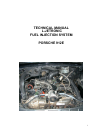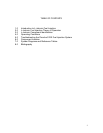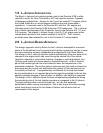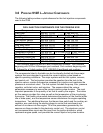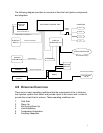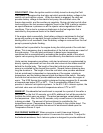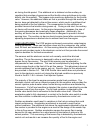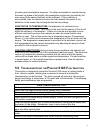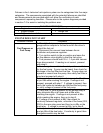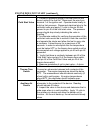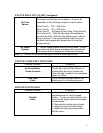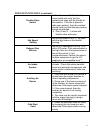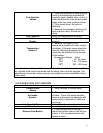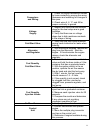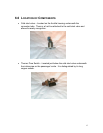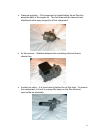
8
provides good acceleration response. If sudden acceleration is required during
the warm up phase of the engine, the acceleration enrichment provided by the
over-swing of the sensor flap may not be sufficient. If this condition is
encountered, then the electronic control unit also detects the speed of the
deflection of the sensor flap and adjusts the fuel accordingly.
ADAPTATION TO TEMPERATURE: Compensation for variations in air
temperature must be made. This is due to the fact that the density of the air will
affect the efficiency of combustion. Colder air is denser and provides a more
efficient combustion process than warmer air when the same throttle valve
position is used. The air flow sensor has a temperature sensor (Temperature
Sensor I) in the intake which measures the temperature of the air drawn into the
engine. The temperature measurement is provided to the electronic control unit
that compensates for the various temperatures by adjusting the amount of fuel
provided for the combustion process.
COASTING ADAPTATION: During normal driving conditions, the operator will
often lift his foot completely off of the accelerator pedal and coast. The electronic
control unit detects this operating condition and the result is that the injector
valves will be closed above a certain speed and temperature. If a load condition
is sensed again, or if the speed sinks below a preset value, then the injection
process returns to normal operation.
5.0 TROUBLESHOOTING THE PORSCHE 912E FUEL INJECTION
This section is designed to assist the Porsche 912E owner in locating faults in
the L-Jetronic system, isolating the component involved and testing the
component for correct function. The tools required will include a fuel pressure
gauge and fittings, a tachometer, a CO meter and volt-ohmmeter. The following
safety and maintenance tips are provided:
SAFETY/MAINTENANCE TIPS
Never jump the battery to start the car.
Never start the engine without battery cables firmly connected.
Always remove cables from battery before charging.
Never remove cables from battery with engine running.
Never remove or attach wiring harness plug to Control Unit with the ignition on or
with battery connected.
When turning the engine over to check compression, unplug the red cable from
the battery to the relays. Remember, there is not a fuse on this line
Before testing the L-Jetronic system, make sure the timing, dwell and spark plug
gaps are within specification.
Make sure all vacuum hoses and fuel hoses are connected and in good working
order.
Check for air leaks in associated with the air filter and connecting hose.



